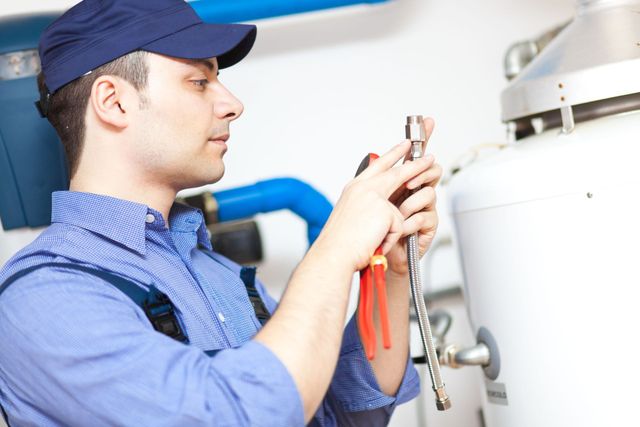Essential Maintenance Strategies for Your Home's Hot Water SystemSteps to Prolong the Lifespan of Your Home's Hot Water System Through Maintenance
Book A Service CallPresented here further down you will find lots of quality points relating to Tips For Maintaining Your Hot Water Heater.

Warm water is essential for daily convenience, whether it's for a revitalizing shower or washing meals. To ensure your hot water system runs effectively and lasts longer, regular upkeep is vital. This post offers useful tips and understandings on how to maintain your home's warm water system to prevent interruptions and costly fixings.
Introduction
Maintaining your home's hot water system might appear overwhelming, yet with a couple of easy steps, you can ensure it runs efficiently for many years ahead. This overview covers whatever from comprehending your warm water system to do it yourself maintenance suggestions and knowing when to call in specialist assistance.
Significance of Maintaining Your Warm Water System
Normal maintenance not only expands the life-span of your hot water system yet additionally guarantees it runs effectively. Overlooking maintenance can lead to decreased efficiency, greater power expenses, and also premature failure of the system.
Signs Your Warm Water System Demands Upkeep
Understanding when your hot water system needs focus can protect against significant problems. Watch out for signs such as irregular water temperature level, unusual noises from the heating system, or corroded water.
Comprehending Your Hot Water System
Before diving right into upkeep tasks, it's helpful to comprehend the basic parts of your hot water system. Typically, this consists of the water heater itself, pipelines, anode rods, and temperature level controls.
Monthly Upkeep Tasks
Regular month-to-month checks can assist capture minor concerns before they rise.
Flushing the Hot Water Heater
Flushing your hot water heater eliminates debris buildup, boosting efficiency and lengthening its life.
Checking and Changing Anode Rods
Anode rods stop corrosion inside the storage tank. Inspecting and replacing them when broken is essential.
Evaluating and Adjusting Temperature Setups
Changing the temperature level setups ensures optimum performance and safety and security.
DIY Tips for Upkeep
You can carry out several upkeep tasks yourself to maintain your warm water system in leading problem.
Looking for Leakages
Consistently evaluate pipelines and connections for leaks, as these can result in water damage and greater costs.
Examining Stress Alleviation Valves
Checking the stress safety valve guarantees it works properly and stops extreme pressure buildup.
Insulating Pipes
Insulating warm water pipelines lowers warmth loss and can conserve power.
When to Call a Specialist
While do it yourself maintenance is beneficial, some problems call for expert knowledge.
Complex Issues Requiring Specialist Assistance
Instances consist of major leaks, electric troubles, or if your hot water heater is consistently underperforming.
Regular Specialist Upkeep Benefits
Specialist upkeep can include comprehensive examinations, tune-ups, and making certain conformity with safety and security requirements.
Conclusion
Routine upkeep of your home's warm water system is necessary for performance, long life, and price financial savings. By adhering to these pointers and understanding when to seek specialist help, you can make sure a dependable supply of warm water without unforeseen disturbances.
How to Maintain an Instant Hot Water Heater
Before tinkering with your hot water heater, make sure that it’s not powered on. You also have to turn off the main circuit breaker and shut off the main gas line to prevent accidents. Also turn off the water valves connected to your unit to prevent water from flowing into and out of the appliance. 2. When you’re done, you have to detach the purge valves’ caps. These look like the letter “T” and are situated on either side of the water valves. Doing so will release any pressure that has accumulated inside the valves while at the same time avoid hot water from shooting out and burning your skin. 3. When the purge valves’ caps are removed, you have to connect your hosing lines to the valves. Your unit should have come with three hoses but if it didn’t, you can purchase these things from any hardware or home repair shops. You can also get them from retail stores that sell water heating systems. Read the user’s manual and follow it to complete this task properly. When the hosing lines are connected, open the purge port’s valves. 4. You should never use harsh chemical cleaners or solutions when cleaning your unit. Make use of white vinegar instead. It should be undiluted and you’ll probably use about 2 gallons. 5. Now flush your water heater. This task should probably take about 40 minutes. We can’t give you specific directions for this because the procedure is carried out depending on the type, model and brand of your heater. With that being said, refer to the user’s manual. 6. When you’re done draining the unit, you have to turn off the purge port valves again. Remove the hosing lines that you earlier installed on each of the water valves. Put the valve caps (purge port) back in their respective places and be very careful so as not to damage the rubber discs that are found inside these caps. 7. Now that everything’s back in place, check your user’s manual again to find out how to reactivate your water heating system. 8. Once it is working, turn one of your hot water faucets on just to let air pass through the heater’s water supply pipes. Leave the tap on until water flows smoothly out of it. https://www.orrplumbing.com/blog/2014/september/how-to-maintain-an-instant-hot-water-heater/

I was made aware of that article on What Kind of Maintenance Do Water Heaters Need? from someone on another web blog. Liked our piece? Please quickly share it. Help someone else locate it. Thank you so much for your time invested reading it.
Visit My Website